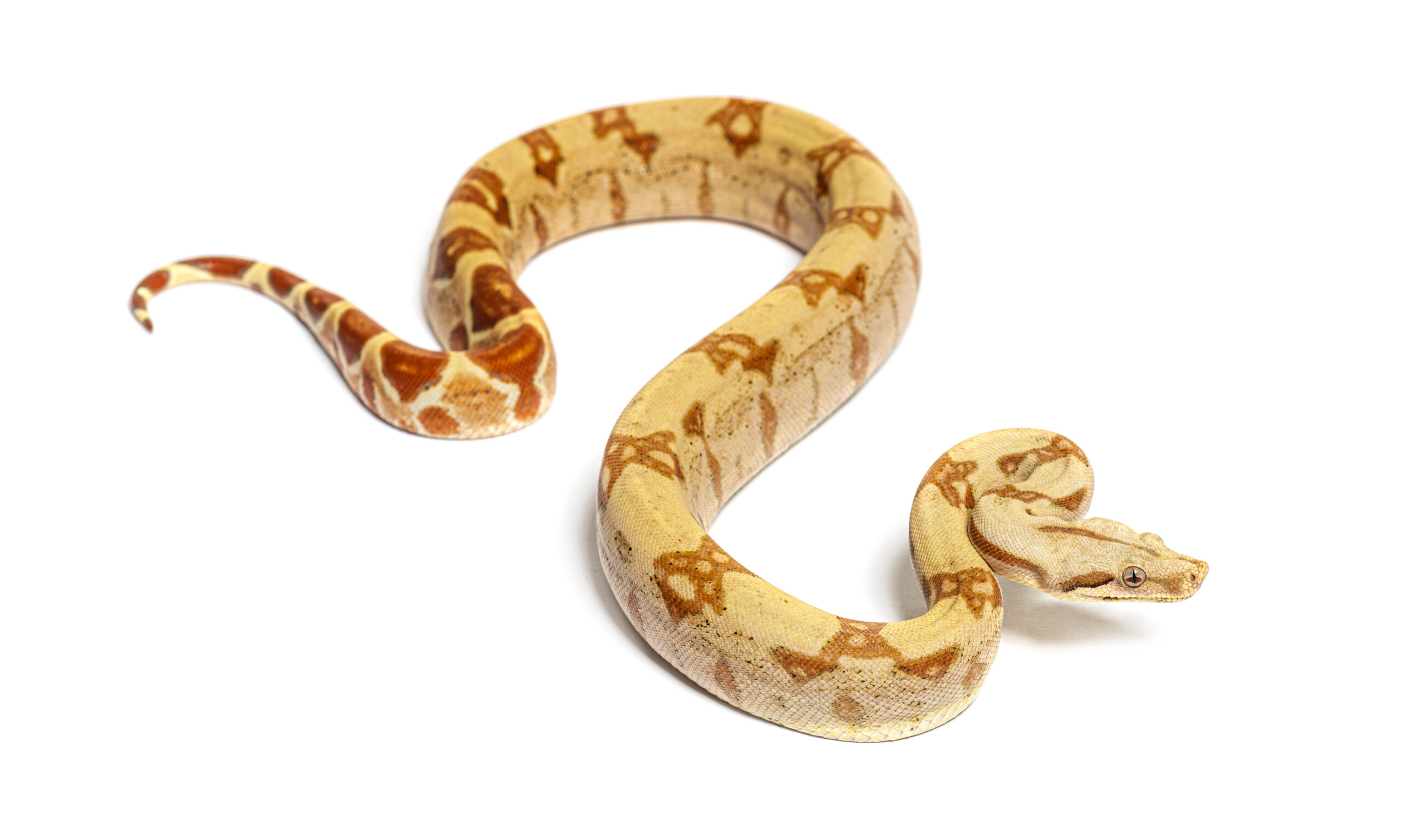Introduction: What Is Het In Snake Breeding?
Snake breeding can be an intriguing and rewarding hobby or profession, but one concept that often leaves beginners confused is “het.” In this blog post, we will unravel the mystery surrounding what het means in snakes and delve into the significance of heterozygous reptile breeding.
By understanding how these elusive genetic traits play a role in creating visually stunning snake morphs, you will be better equipped to make informed decisions about your own breeding projects.
Key Takeaways
- “Het” in snake breeding refers to being heterozygous or having one copy of a specific allele on a chromosome. It plays a critical role in producing desirable traits in snakes and allows breeders to selectively combine genetic variations that result in unique color patterns, markings, or morphs.
- Identifying hets is crucial for successful reptile breeding as it helps prevent unintentional inbreeding, promotes greater genetic diversity, and increases the likelihood of producing offspring displaying desired traits such as Albinos, Clowns, or Desert Ghosts.
- Breeding heterozygous snakes can increase genetic diversity leading to potentially higher profits due to visually dynamic offspring that fetch higher prices. But there are risks associated with breeding hets including unwanted offspring production and diluting purebred lineages. Therefore, it’s essential that breeders take proper precautions and understand the risks associated with breeding heterozygous snakes before making decisions on their breeding strategies.
Het In Snakes: Definition And Importance
“Het” in snake breeding refers to being heterozygous, or having one copy of a specific allele on a chromosome, and is important because it can lead to desirable traits in offspring when paired with another heterozygous snake.
The Role Of Heterozygosity In Producing Desirable Traits
Heterozygosity plays a critical role in producing desirable traits in snakes, as it allows breeders to selectively combine genetic variations that result in unique color patterns, markings, or morphs.
By understanding the basics of reptile genetics, breeders can work with various combinations of genes and capitalize on the benefits of heterozygous snakes to create visually stunning offspring.
In addition to enhancing physical appearances, heterozygosity can also contribute to improved overall health and resilience among snake populations. Increased genetic diversity may lead to better resistance against certain diseases or environmental stressors.
To harness the potential of heterozygosity effectively, reptile enthusiasts must meticulously track their animals’ genetic lineages through well-documented breeding records.
This process enables them to identify which individuals carry valuable het traits and strategically pair them together during mating sessions.
Identifying Hets In Snake Morphs
Identifying hets in snake morphs plays a crucial role in the world of reptile breeding. Essentially, het identification allows breeders to determine if a given snake carries the recessive gene responsible for creating a specific desirable trait or pattern when paired with another compatible partner.
One popular method of confirming hets involves tracking lineages and maintaining detailed records about each individual snake’s genetic makeup throughout generations.
Breeding two confirmed het carriers increases the likelihood of producing offspring displaying desired traits such as Albinos, Clowns, or Desert Ghosts.
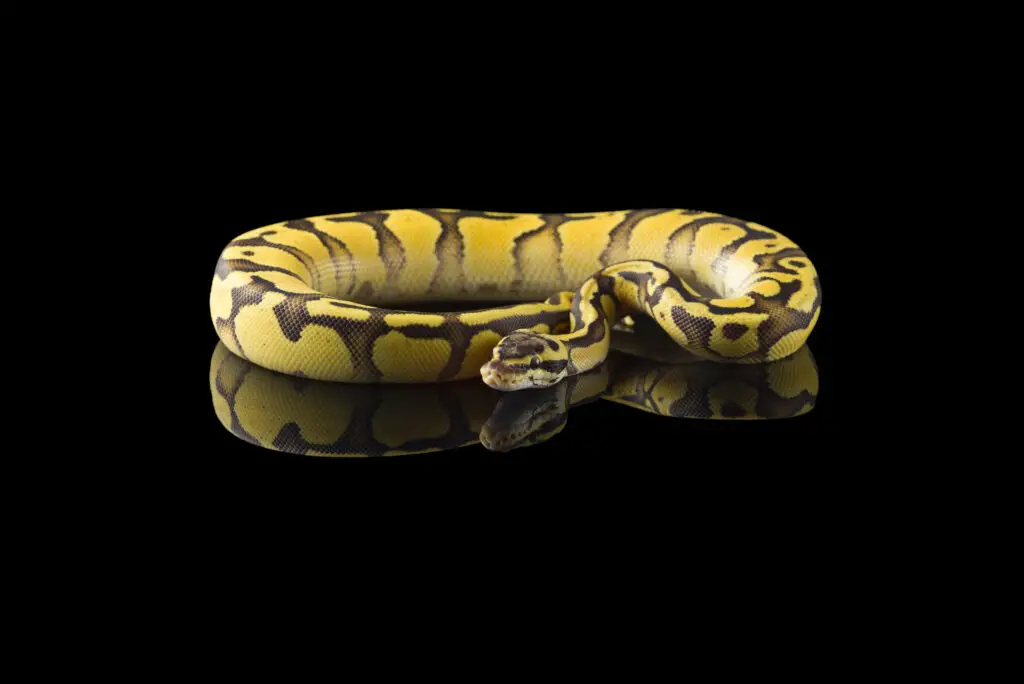
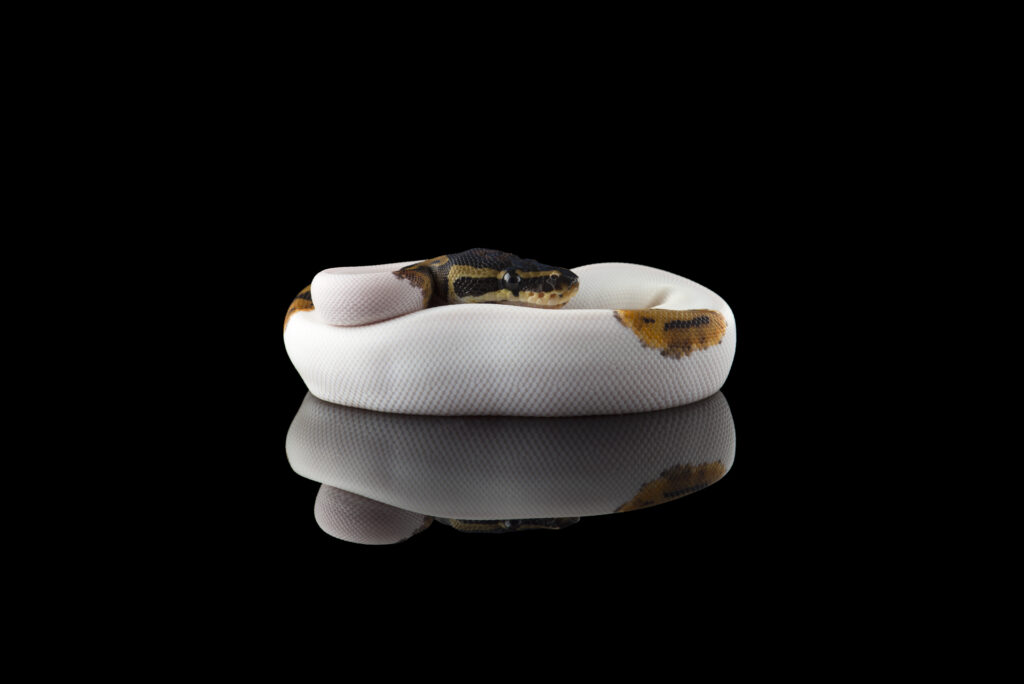
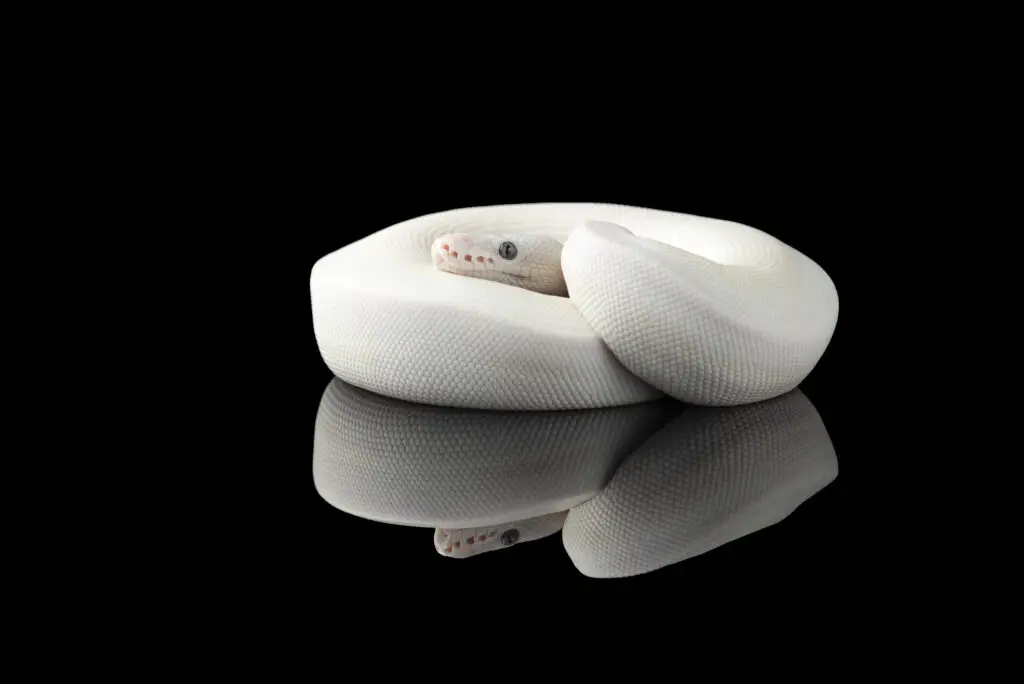
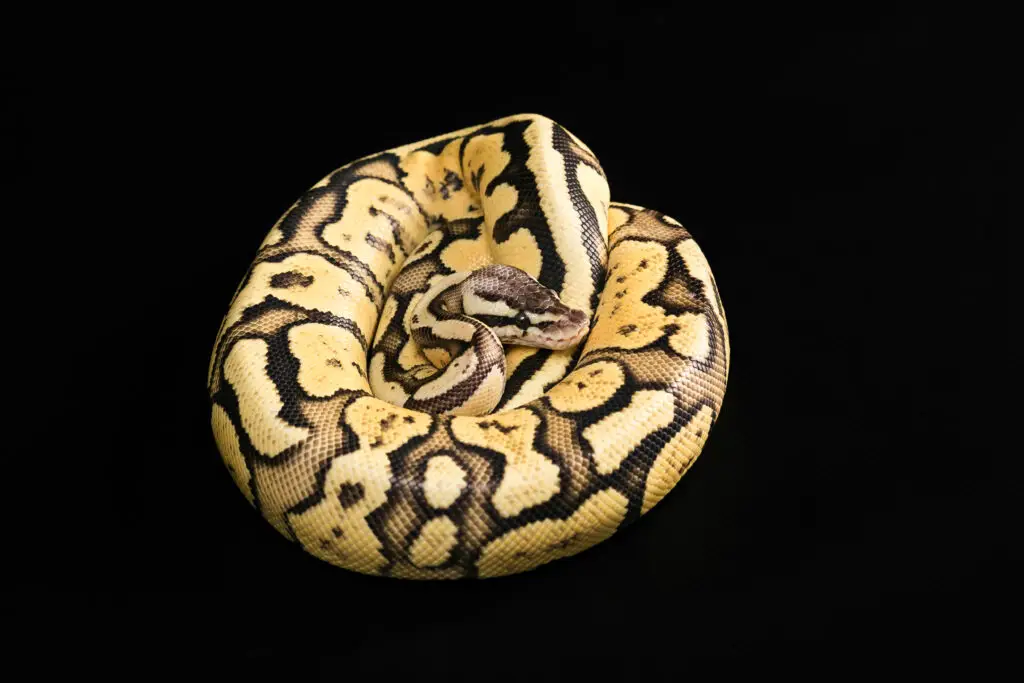
Breeding Strategies For Hets
Breeding Hets requires an understanding of the visual and non-visual expression of the gene and key terms related to heterozygosity in snakes; read on to learn about successful breeding strategies.
Understanding Visual And Non-Visual Expression Of Hets
One of the key factors in successful reptile breeding is the ability to identify and understand the differences between the visual and non-visual expression of heterozygous genes in snakes:
- Visual Expression:
- Physical traits or characteristics inherited from both parents are clearly visible to the naked eye.
- Examples include color patterns, unique markings, or specific scale structures.
- Breeders can easily determine which genes have been inherited by observing a snake’s appearance.
- Non-Visual Expression:
- The snake carries a recessive gene but does not display any physical signs of it.
- This hidden genetic trait may be passed on to offspring if bred with another snake carrying the same recessive gene.
- It is essential for breeders to know their snakes’ genetic makeup through accurate records or genetic testing to ensure successful breeding outcomes.
- Importance of Visual and Non-Visual Expression Knowledge:
- Allows breeders to make informed decisions when selecting breeding pairs for desired traits.
- Ensures that undesirable or harmful traits are not accidentally passed along in the breeding process.
- Facilitates maintaining purebred lineage and increases genetic diversity within captive populations.
Key Terms Related To Heterozygosity In Snakes
Heterozygosity in snakes can be a tricky concept to understand, but there are some key terms that can help clarify things. Here are a few important terms to know:
- Homozygous: This describes an animal that has two identical genes for a given trait.
- Recessive: A gene is recessive when it is not expressed in the presence of the dominant gene.
- Dominant: A gene is dominant when it is expressed over other genes.
- Allele: An allele is one of two or more versions of a specific gene.
- Co-dominance: When both alleles in a heterozygous individual express themselves equally.
- Incomplete dominance: When neither allele fully expresses itself, and they blend together to create something new.
Understanding these key terms related to heterozygosity can help breeders make informed decisions about their snake breeding strategies and produce desirable traits in their offspring.
Pros And Cons Of Breeding Heterozygous Snakes
Breeding heterozygous snakes can increase genetic diversity, potentially lead to higher profits, and produce visually appealing offspring when bred with other snakes carrying the same recessive gene.
Increased Genetic Diversity
Breeding heterozygous snakes can lead to increased genetic diversity within captive populations. This is important because it allows for a wider range of traits that may be beneficial in terms of disease resistance and overall health.
For example, breeding two different morphs together can create offspring with unique physical characteristics that may be more resilient against certain illnesses.
But, there are potential risks associated with breeding hets as well. It’s crucial to approach this process carefully and intentionally in order to prevent unintended consequences such as inbreeding or reduced genetic diversity.
Potential For Higher Profit Margins
Breeding heterozygous snakes can be a lucrative venture for reptile breeders. By introducing recessive traits into a breeding program, breeders can produce visually dynamic and unique offspring that fetch higher prices in the market.
In addition to the potential increase in profits, breeding hets allows for greater genetic diversity within a specific morph. This means that it becomes possible to maintain purebred lineages while still introducing new color variations or patterns through outbreeding programs.
Risk Of Unwanted Offspring
Breeding heterozygous snakes can come with the risk of producing unwanted offspring. When breeders mate two heterozygous animals together, there is a 25% chance that the offspring will not carry the gene at all, which means they do not exhibit any desirable traits.
Producing unwanted offspring can lead to market oversaturation and loss of profit for breeders. It can also be damaging to breeding programs aiming to maintain purebred lineages and study genetic diversity in captive reptile populations.
Maintaining Purebred Lineage
Maintaining purebred lineage is a crucial aspect of reptile breeding. It ensures that the offspring produced carry the desired genetic traits and characteristics of the parent animals.
However, when it comes to breeding heterozygous snakes, maintaining purebred lineage can become complicated.
For example, if a breeder wants to produce albino ball pythons, they will need to start with two homozygous recessive parents carrying the gene responsible for albinism. Breeding these two parents together guarantees an albino outcome in all offspring while maintaining purebred lineage.
In contrast, introducing one heterozygous parent may increase the chances of producing non-albino offspring or creating unexpected morphs down the line.
Conclusion 💭
In conclusion, understanding the term “het” is crucial for successful reptile breeding. Heterozygous snakes may not visually express certain genes but can carry them and pass them on to their offspring.
Breeders must consider the visual and non-visual expression of hets when planning their breeding strategies. While there are potential risks involved in breeding heterozygous snakes, they also offer opportunities for increased genetic diversity and higher profit margins.
FAQs:
What does “het” mean in snake breeding?
“Het” is an abbreviation for heterozygous, which means a snake has inherited only one copy of a particular gene from its parents instead of two.
Why is understanding het important for reptile breeding?
Understanding the concept of het is crucial in determining the genetic makeup and traits that offspring may inherit from their parents during breeding. This knowledge helps breeders select suitable pairings to achieve desired characteristics in future generations.
How can I tell if my snake is heterozygous?
Determining if a snake is heterozygous requires genetic testing or examining its ancestry if available. Breeders can work with reputable labs to conduct tests or learn more about the lineage of their snakes through registries or associations.
Can you selectively breed for specific hets or genes?
Yes, selective breeding methods can be used to increase certain desirable genes or traits in snakes by pairing individuals with complementary genetics and tracking offspring over time. However, it’s essential to prioritize ethical practices that prioritize animal welfare throughout this process and avoid any harmful genetic practices that may cause health problems down the line.

